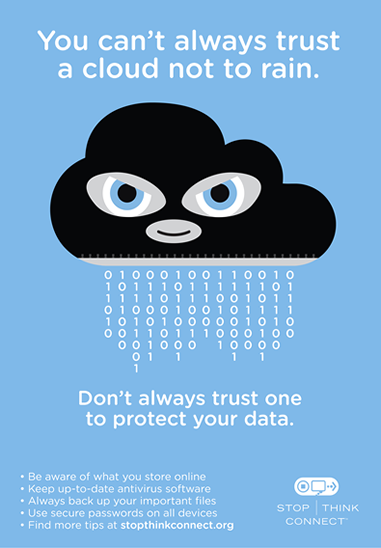Campus Security Awareness Campaign 2016
This post is part of a larger campaign designed to support security professionals and IT communicators as they develop or enhance their security awareness plans. View the other monthly blog posts with ready-made content, as well as a printable calendar with the 12 topics. Learn more.
There are many precautions end users can take to protect their mobile devices and laptops in case of theft or loss. Below are some ready-made messages that you can customize for your community.
Get the Word Out
Newsletter Content
Mobile phones, tablets, and laptops continue to provide us with the opportunity to work "on the go," but this added convenience could also mean more risk. These personal devices are making it easier to store and access information, but they are also easy to steal or misplace. Do you know what to do if your device is lost or stolen?
- Secure your devices. Use a passphrase, password, or fingerprint to secure your device from casual intrusion.
- Turn on location tracking. If your device has a "Find Me" feature (such as Apple's iCloud service to "Find My iPhone") make sure it is enabled. Or investigate third-party software to help you recover your devices.
- Encrypt and backup information. Determine if your device encrypts your data at rest. That way if it's stolen, you just lose the device and don't open yourself to identity theft. If your device doesn't use encryption by default, enable it or install encryption software. Don't forget to backup information on all of your mobile devices too.
- Write it down! Record the manufacturer, model, and serial numbers of your mobile devices and store the info in a safe place.
- Notify providers. Keep important phone numbers such as your cell phone provider or IT support department handy so you can quickly report the device as lost or stolen. In some cases the cell provider or your support desk may be able to deactivate and wipe the device for you remotely.
- File a report. If your device is stolen, file a police report immediately.

Use this image to support your message (click for larger image).
Social Posts
- Mobile device phone home! Install a location finder on your device in case it's lost or stolen #StolenDevice http://i.imgur.com/E5UfBzD.jpg
- Encrypt personal information on your laptop or mobile device. #StolenDevice
- Physically protect your device. Use a laptop lock and never leave your device unattended — even for a minute! #StolenDevice
- Password protect your devices and configure devices to lock after a short period of time. #StolenDevice http://i.imgur.com/YrwuSnw.jpg
- Backup important data & use #encryption in case you need to remotely wipe a lost or stolen device. #StolenDevice
E-Mail Signature
Ask staff to add a tip to their e-mail signature block and link to your institution's mobile device guidelines.
Example:
John Doe
Chief Information Security Officer
University of XYZSecure your mobile devices and create a backup plan. Learn more. [Link "Learn more" to your institution's mobile device guidelines or link to these Safety Tips for Mobile Devices.]
Embed or Share Videos
Resources
Share these resources with end users or use them to inform your awareness strategy.
- You Can't Always Trust a Cloud Not to Rain (poster) [Use something like this for caption above and link picture to Pinterest post.]
- Learn more about mobile device safety from the Stop.Think.Connect. campaign.
- The FCC offers a Smart Device Protection Toolkit [www.fcc.gov/guides/smart-device-protection-toolkit-law-enforcement].
- Read more about how to remotely track any lost smartphone, tablet, or PC.
Brought to you by the Awareness and Training Working Group of the EDUCAUSE Higher Education Information Security Council (HEISC).
© 2016 EDUCAUSE. This EDUCAUSE Review blog is licensed under the Creative Commons BY-NC-SA 4.0 International license.
